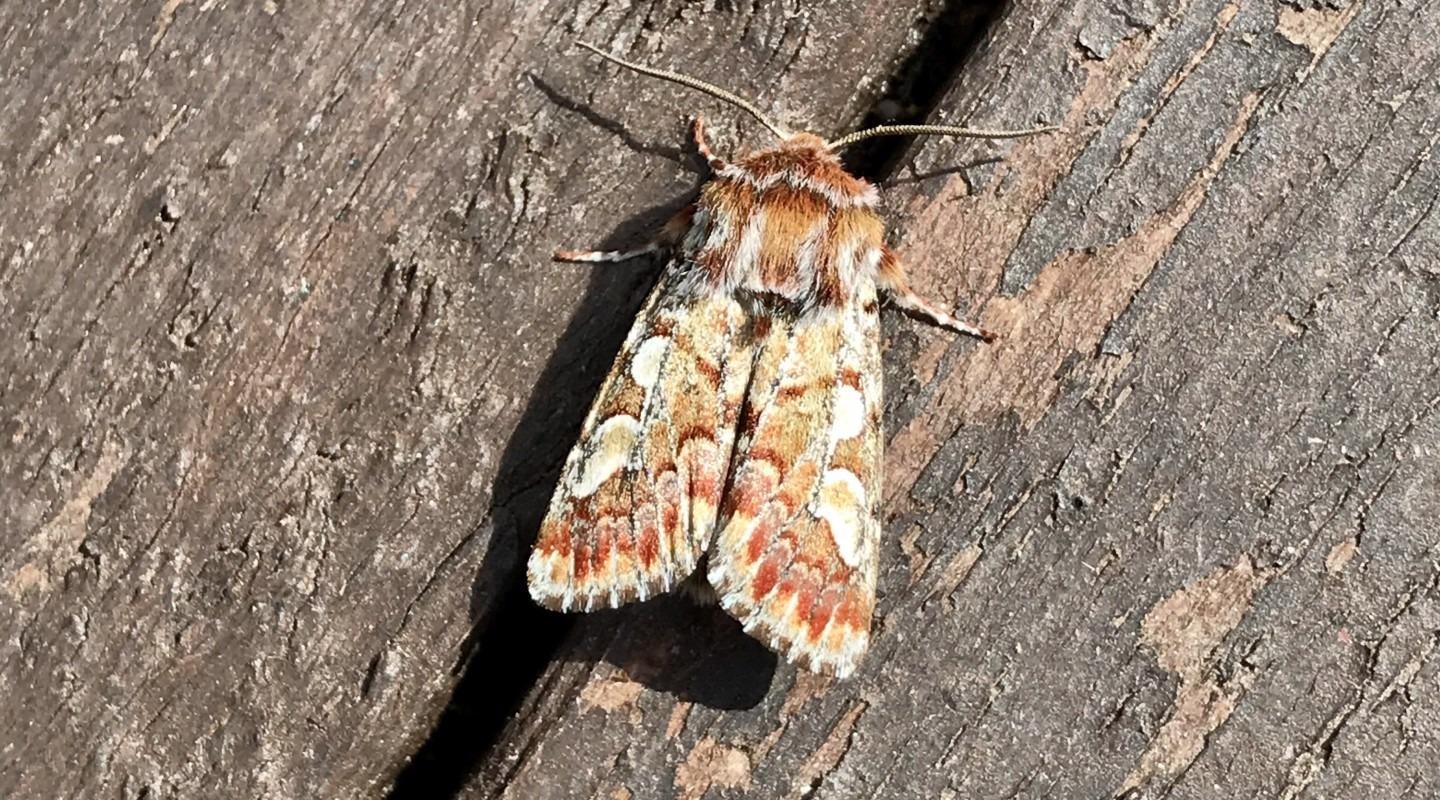A new study performed at the University of Eastern Finland has shown that variations caused in both the size and distribution of the pine beauty moth population are connected to higher temperatures.
 Pine beauty moth (Panolis flammea). Image Credit: University of Eastern Finland.
Pine beauty moth (Panolis flammea). Image Credit: University of Eastern Finland.
The study outcomes are reported in the Scandinavian Journal of Forest Research.
This is not unexpected, since many scientists have previously predicted that some insect pests will shift their distribution range northward as a result of rising temperatures caused by climate change. However, what is astonishing is that this is happening 50 years ahead of earlier predictions.
Alexander Pulgarin Diaz, Doctoral Researcher, University of Eastern Finland
The pine beauty moth’s larvae feed on the needles of various pine species throughout Central Europe, thereby developing periodical outbreaks that are frequently regulated with chemical insecticides. Such outbreaks synchronize with other pine insect pests and diseases and can extend to thousands of hectares.
No proof of any outbreaks has been reported in Finland. However, conditions for their development could become favorable owing to increasing temperatures and forest health decline — both of which are considered impacts of climate change.
Studies performed earlier have shown that temperature is directly linked to the development and distribution of insects. For the distribution and size of the pine beauty moth population in Finland to be studied, the scientists joined various captured individuals with the early year’s thermal sums for the same location.
To do this, the researchers made use of traps across Finland and discovered that this insect pest had distributed into northern Finland, up to 68°51′N. Furthermore, they discovered that its abundance was greater in warmer places, similar to that in southern Finland.
As climate change continues to progress and temperatures increase in Finland, the range and population density of the pine beauty moth might also grow, thereby making it a common and abundant pine feeder across the country.
The study outcomes obtained on the pine beauty moth are parallel with earlier findings on another significant pine defoliator, the Nun moth (Lymantria monacha), which has also increased considerably in Finland since 2000.
The study was financially supported by the Academy of Finland Flagship Programme Forest-Human-Machine Interplay-Building Resilience, Redefining Value Networks, and Enabling Meaningful Experiences (UNITE) (decision no: 337127).
Journal Reference:
Díaz, J. A. P., et al. (2022) Thermal sum drives abundance and distribution range shift of Panolis flammea in Finland. Scandinavian Journal of Forest Research. doi.org/10.1080/02827581.2022.2060303.